11 Full-Sun Flowering Ground Covers That Will Creep Across Your Garden

This post follows our research editorial guidelines.

If you’re looking for a ground cover that adds color and texture to your garden while withstanding the harsh sun, look no further than these full-sun flowering ground covers.
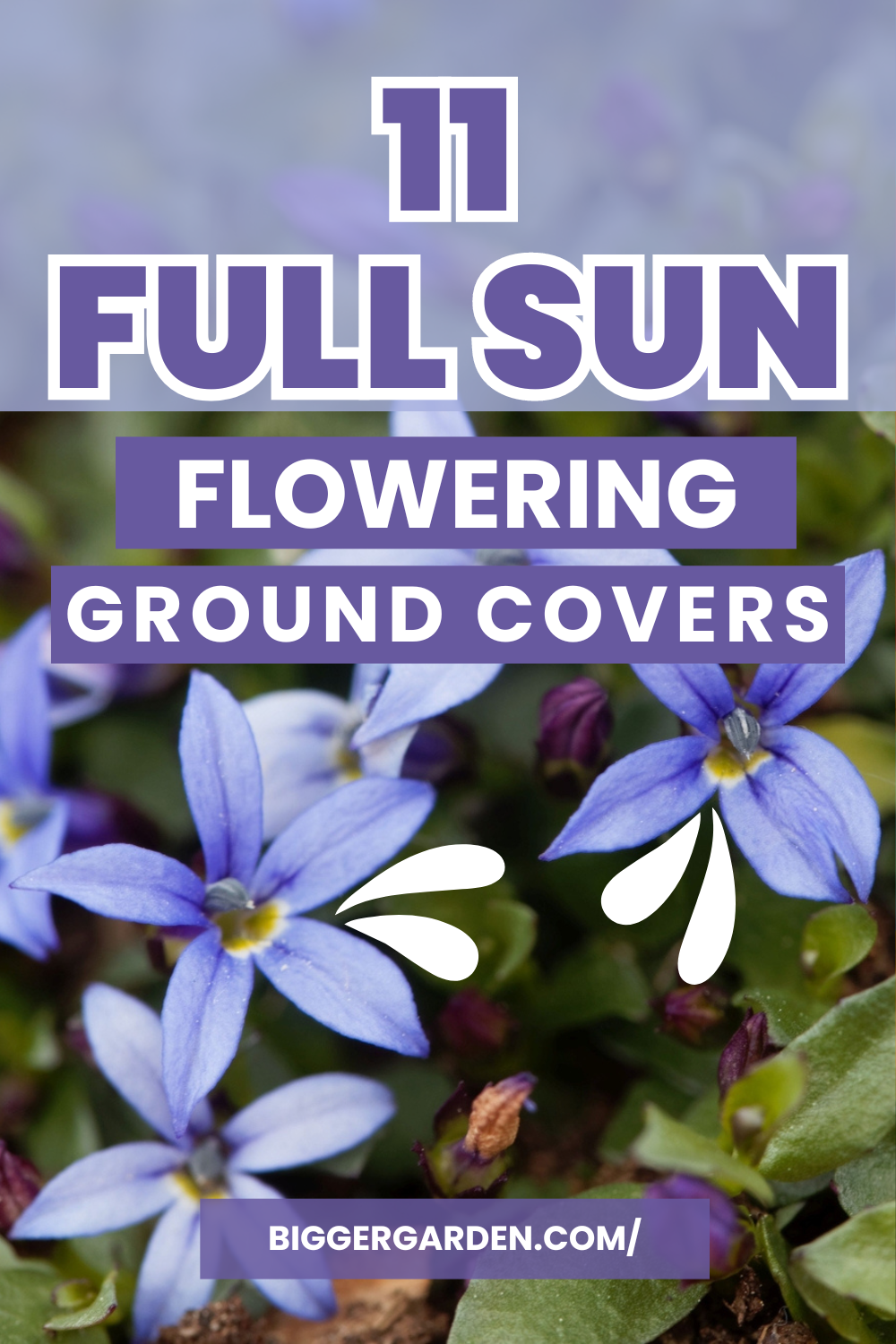
These ground covers will creep and crawl across your garden with their delicate blooms and sturdy nature, transforming it into a haven of beauty.
Quickly Find Flowering Ground Covers:
1. Creeping Thyme (Thymus Praecox)
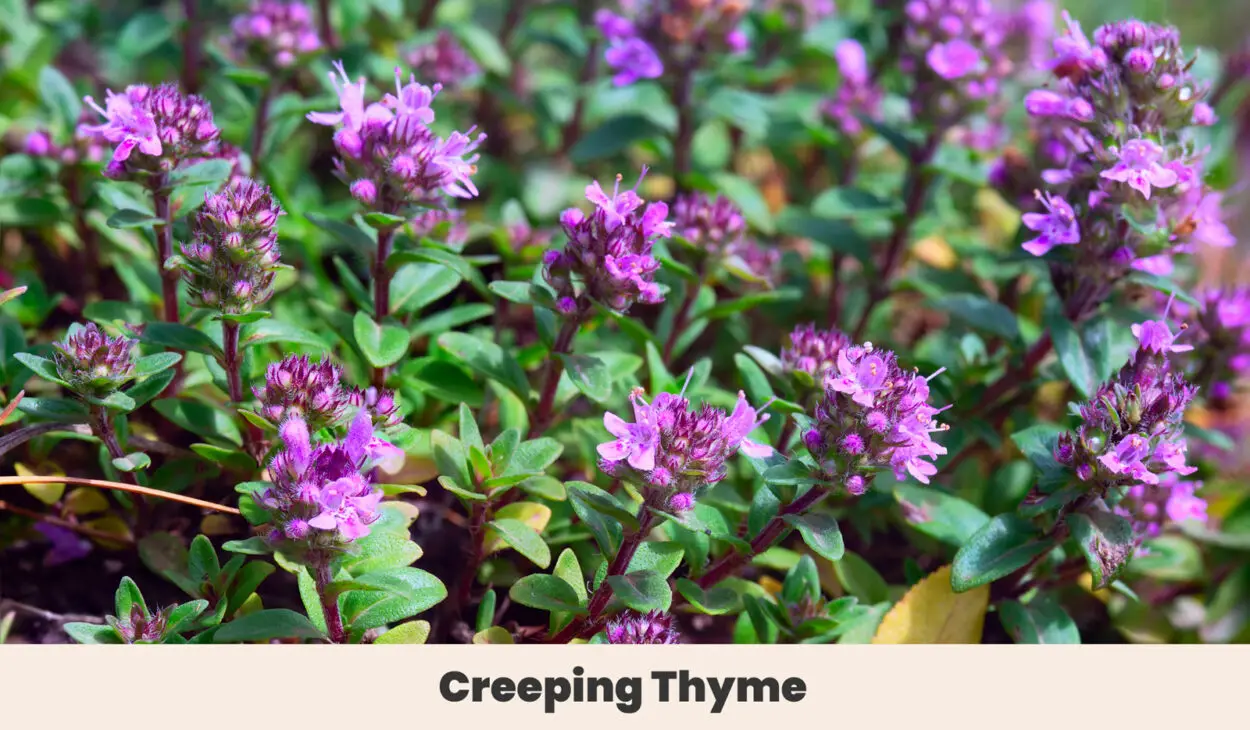
This hardy ground cover has lovely foliage and delicate purple flowers. When brushed, it forms a low, spreading mat of tiny leaves, releasing a pleasant fragrance.
Creeping Thyme is a low-maintenance plant that thrives in full sun and well-drained soil, so it’s great for rock gardens, stepping stones, or as a border plant.
| Botanical Name: | Thymus Praecox |
| Growth Rate: | Slow |
| Native Range: | Europe, North Africa |
| Hardiness Zones: | 4-8 |
| Soil Needs: | Well-drained, sandy soil |
| Exposure: | Full sun |
| Blooming Period: | Late spring to early summer |
| Water Needs: | Drought tolerant once established, but benefits from occasional deep watering |
2. Creeping Phlox (Phlox Stolonifera)
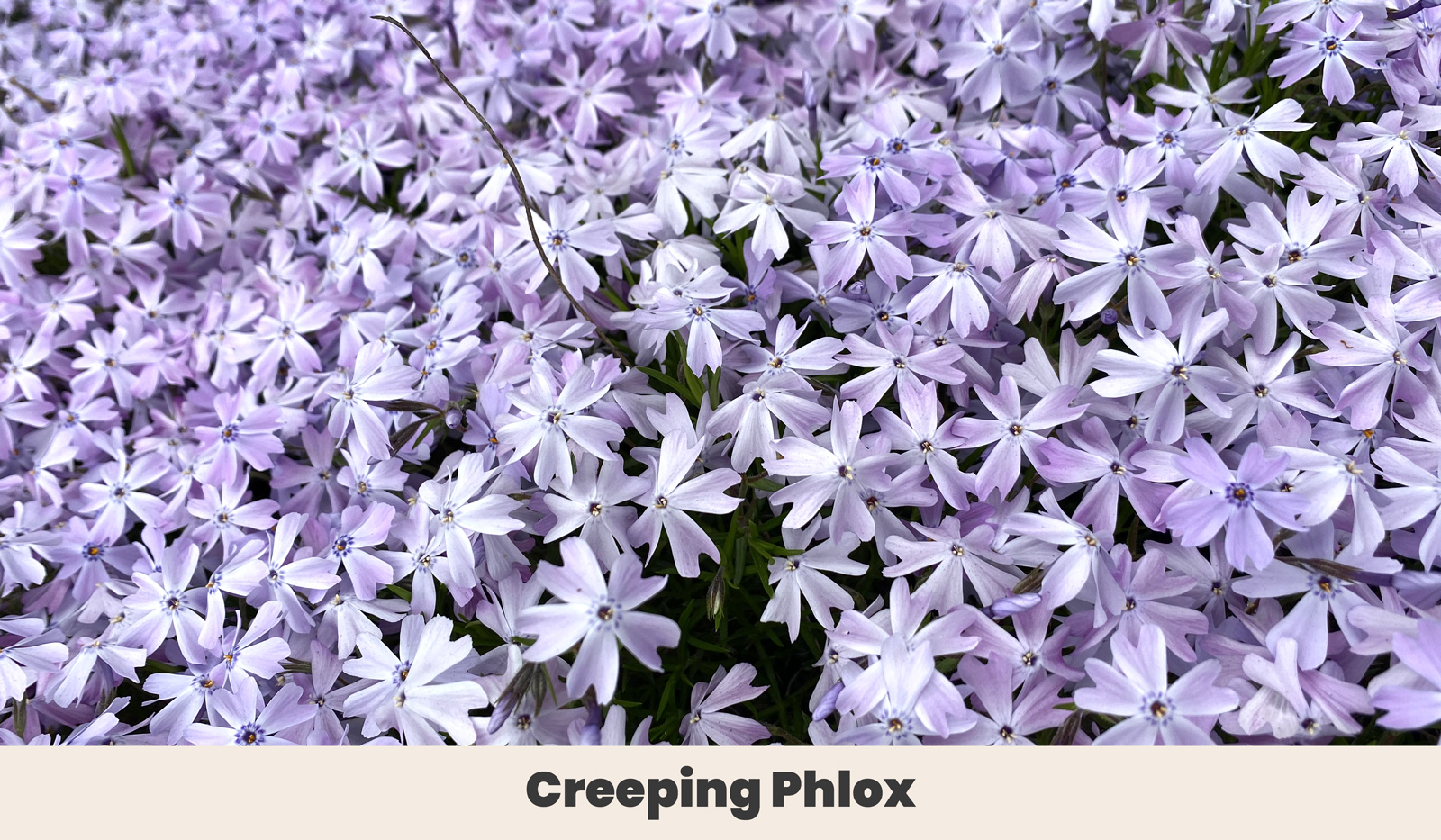
A charming and easy-to-grow ground cover, Creeping Phlox is a perennial plant that produces clusters of star-shaped flowers in shades of pink, purple, blue, and white.
It has long, trailing stems covered in dense foliage and prefers partial shade and moist, well-drained soil. You can use it to cover slopes or rock gardens.
| Botanical Name: | Phlox Stolonifera |
| Growth Rate: | Moderate |
| Native Range: | Eastern North America |
| Hardiness Zones: | 4-8 |
| Soil Needs: | Moist, well-drained soil |
| Exposure: | Part shade to full shade |
| Blooming Period: | Late spring to early summer |
| Water Needs: | Consistent moisture, but can tolerate some drought once established |
3. Creeping Rosemary (Rosmarinus Officinalis Prostrata)
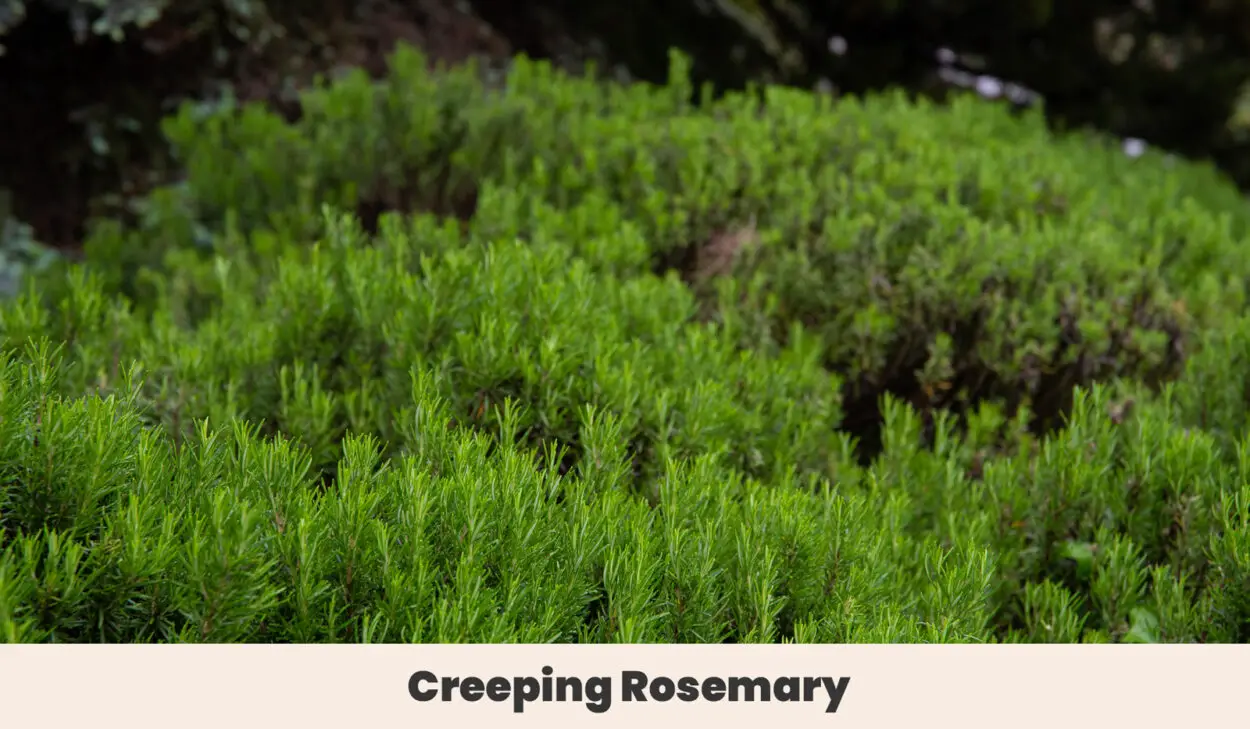
This ornamental and practical Creeping Rosemary forms a dense, low-growing mat of fragrant spiked foliage and delicate blue flowers.
It’s a versatile ground cover that prefers full sun and well-drained soil and can be used to cover steep banks, as a border plant, or as a fragrant addition to a rock garden.
| Botanical Name: | Rosmarinus Officinalis Prostrata |
| Growth Rate: | Slow |
| Native Range: | Mediterranean region |
| Hardiness Zones: | 7-10 |
| Soil Needs: | Well-drained, sandy soil |
| Exposure: | Full sun |
| Blooming Period: | Late spring to early summer |
| Water Needs: | Drought tolerant once established, but benefits from occasional deep watering |
4. Candytuft (Iberis Sempervirens)
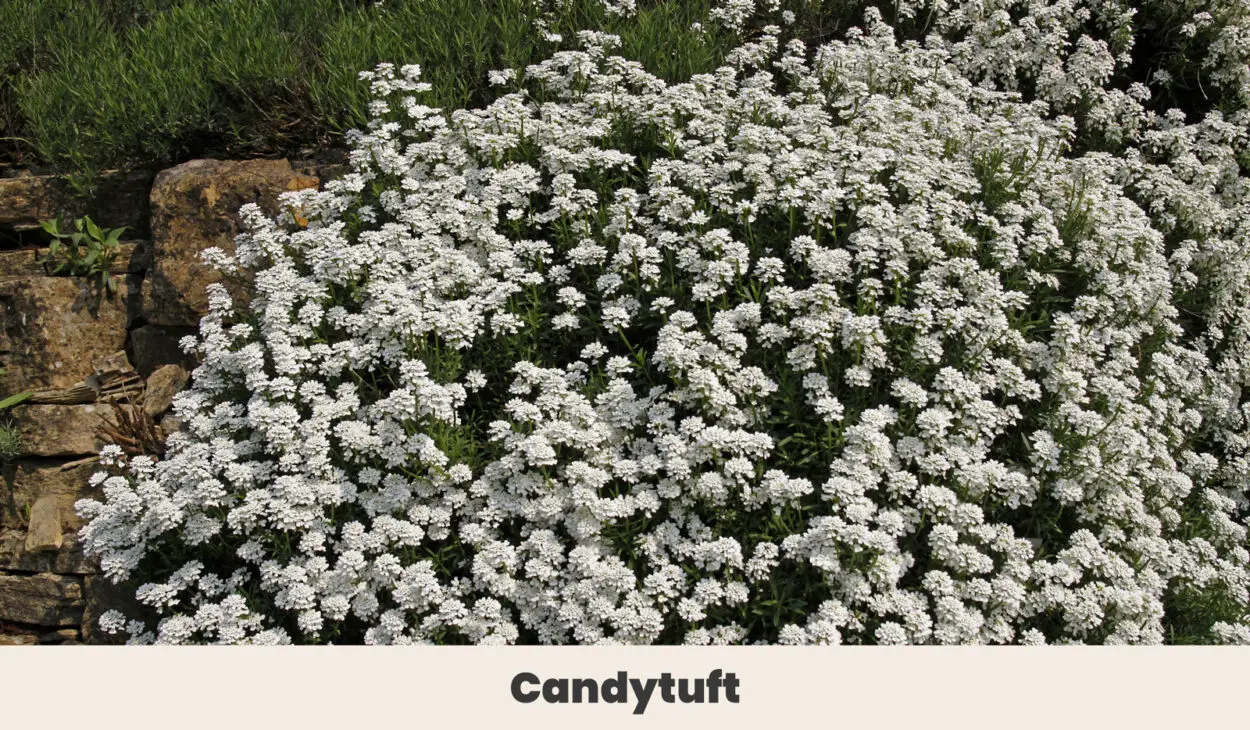
This hardy, evergreen perennial produces masses of tiny, four-petaled flowers in shades of white, pink and purple.
It’s a low-growing plant that forms a dense mat of foliage and thrives in full sun and well-drained soil. Candytuft is excellent for edging, rock gardens, or as a container plant.
| Botanical Name: | Iberis sempervirens |
| Growth Rate: | Moderate |
| Native Range: | Southern Europe |
| Hardiness Zones: | 3-9 |
| Soil Needs: | Well-drained soil prefers alkaline pH |
| Blooming Period: | Late spring to early summer |
| Water Needs: | Consistent moisture, but can tolerate some drought once established |
5. Blue Star Creeper (Isotomafluviatilis)
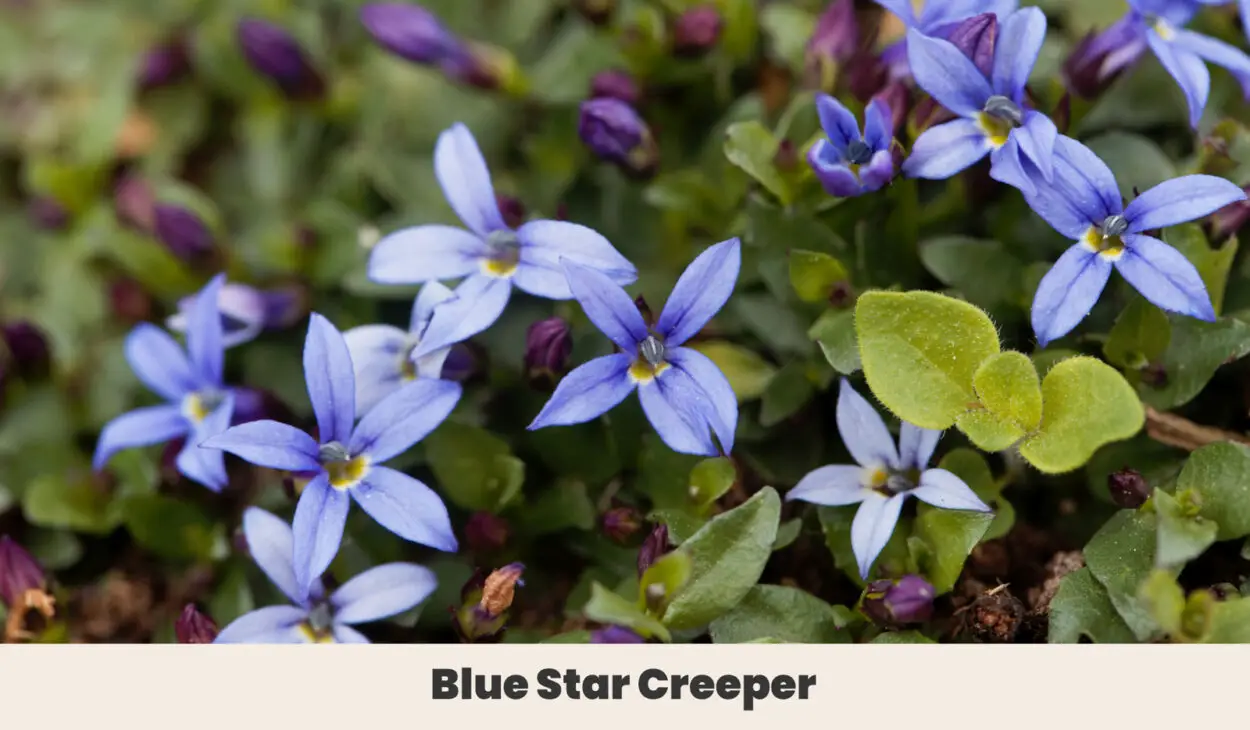
A charming and delicate ground cover, Blue Star Creeper produces a profusion of star-shaped blue flowers and tiny leaves that form a dense mat of greenery.
It’s ideal for planting between pavers, rock gardens, or as a border plant.
| Botanical Name: | Isotomafluviatilis |
| Growth Rate: | Moderate |
| Native Range: | Australia, New Zealand |
| Hardiness Zones: | 6-9 |
| Soil Needs: | Well-draining soil |
| Exposure: | Full sun to part shade |
| Blooming Period: | Spring to summer |
| Water Needs: | Consistent moisture, but can tolerate some drought once established |
6. Creeping Potentilla (Potentilla reptans)
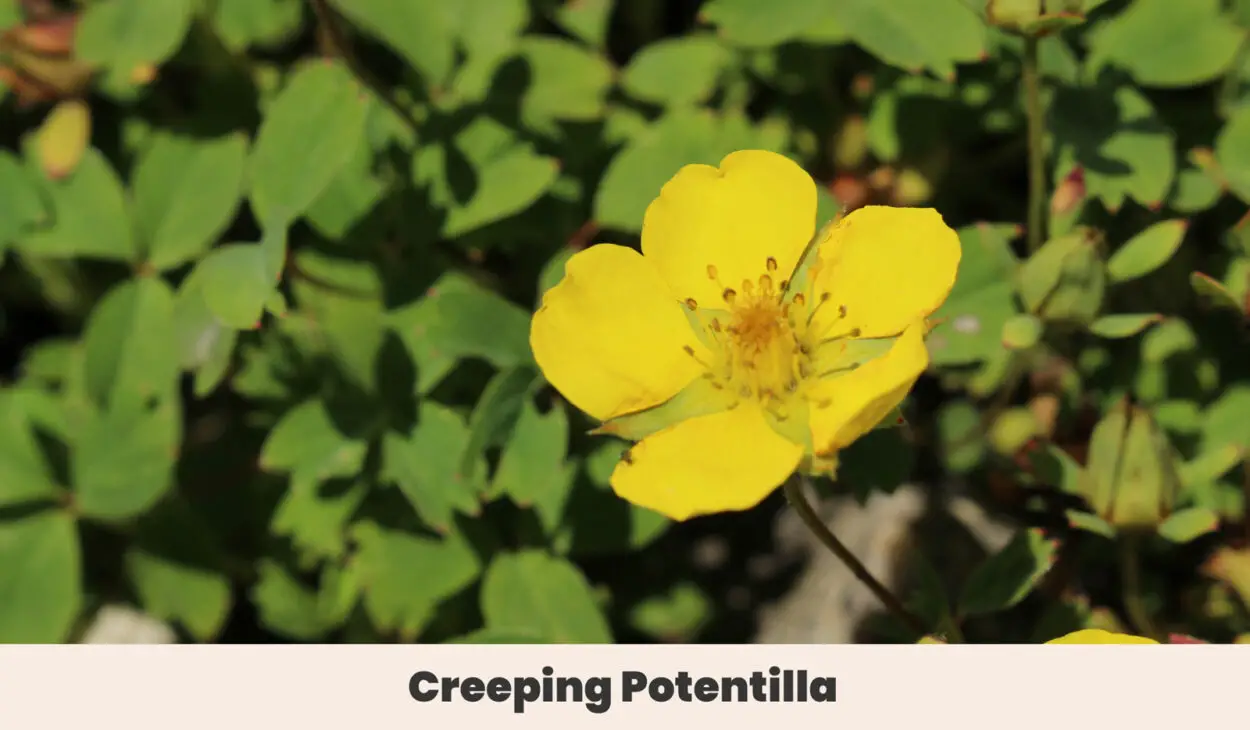
This low-growing perennial produces bright yellow, five-petaled flowers that bloom from late spring to early summer.
It forms a dense mat of green foliage and thrives in full sun and well-drained soil.
Creeping Potentilla is perfect for rock gardens, stepping stones, or as a ground cover in sunny areas.
| Botanical Name: | Potentilla reptans |
| Growth Rate: | Slow |
| Native Range: | Europe, Asia |
| Hardiness Zones: | 4-8 |
| Soil Needs: | Well-drained, slightly acidic soil |
| Exposure: | Full sun to part shade |
| Blooming Period: | Late spring to early summer |
| Water Needs: | Drought tolerant once established, but benefits from occasional deep watering |
7. Creeping Speedwell (Veronica Filiformis)
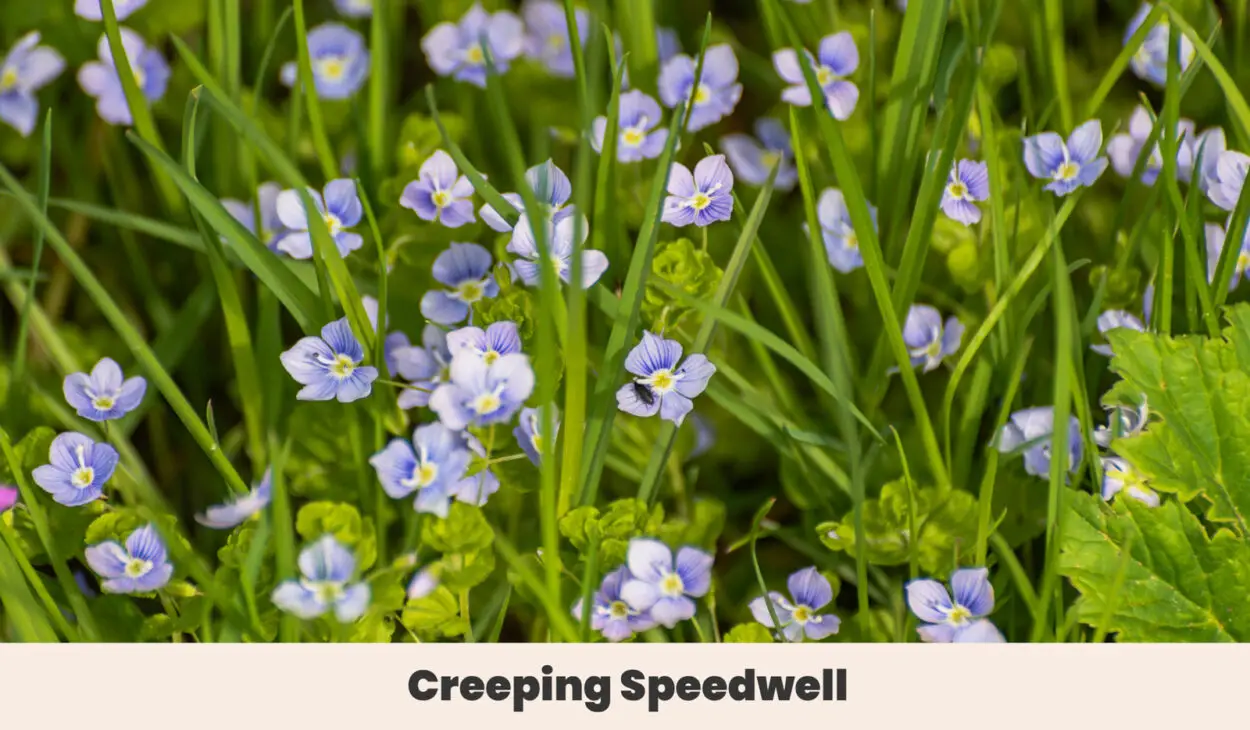
This hardy and fast-growing ground cover produces tiny, sky-blue flowers. It also forms a dense mat of green foliage and thrives in full sun and well-drained soil.
Creeping Speedwell is excellent for edging, rock gardens, or as a container plant.
| Botanical Name: | Veronica Filiformis |
| Growth Rate: | Moderate |
| Native Range: | Europe, Asia |
| Hardiness Zones: | 4-8 |
| Soil Needs: | Well-drained soil |
| Exposure: | Full sun to part shade |
| Blooming Period: | Late spring to early summer |
| Water Needs: | Drought tolerant once established, but benefits from occasional deep watering |
8. Bellflower (Campanula Portenschlagiana)
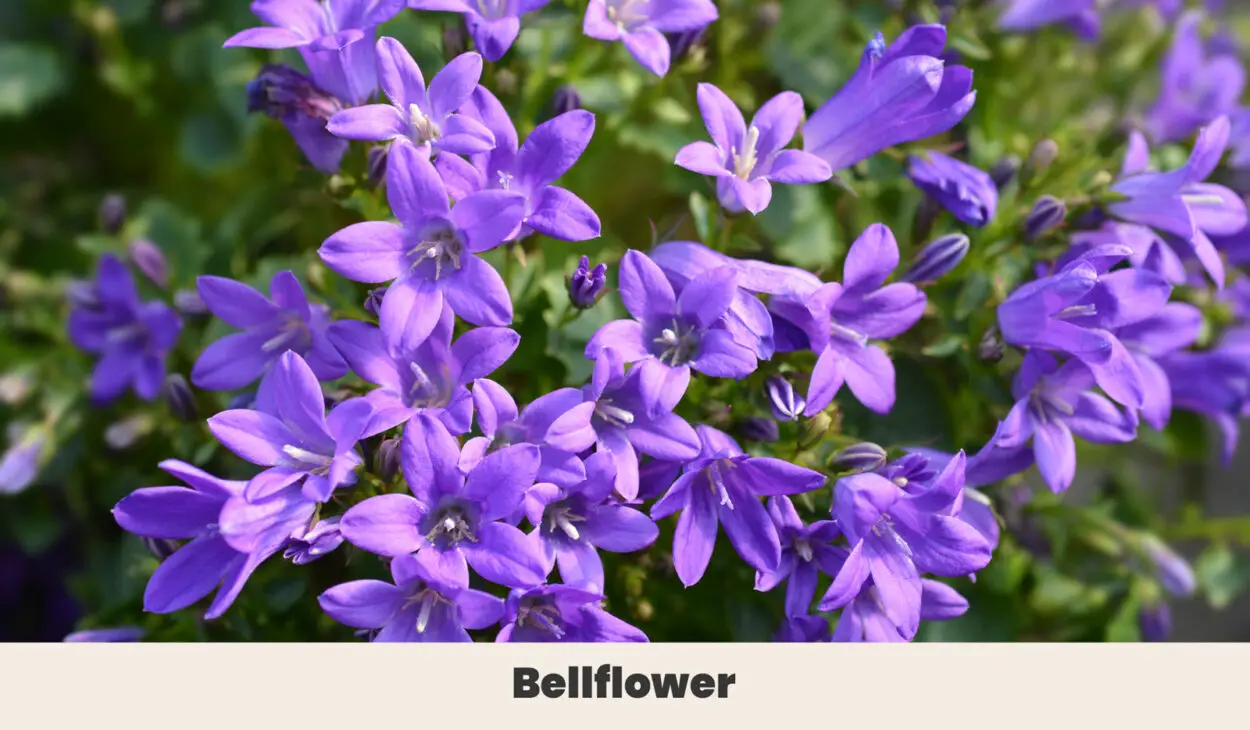
This charming and delicate ground cover produces bell-shaped flowers in shades of blue, pink, and white.
It forms a dense mat of green foliage and thrives in full sun, partial shade, and moist, well-drained soil. Bellflower is ideal for rock gardens, edging, or as a border plant.
| Botanical Name: | Campanula Portenschlagiana |
| Growth Rate: | Moderate |
| Native Range: | Southern Europe |
| Hardiness Zones: | 4-9 |
| Soil Needs: | Moist, well-drained soil |
| Exposure: | Part shade to full sun |
| Blooming Period: | Late spring to early summer |
| Water Needs: | Consistent moisture, but can tolerate some drought once established |
9. Russian Stonecrop (Sedum Kamtschaticum)
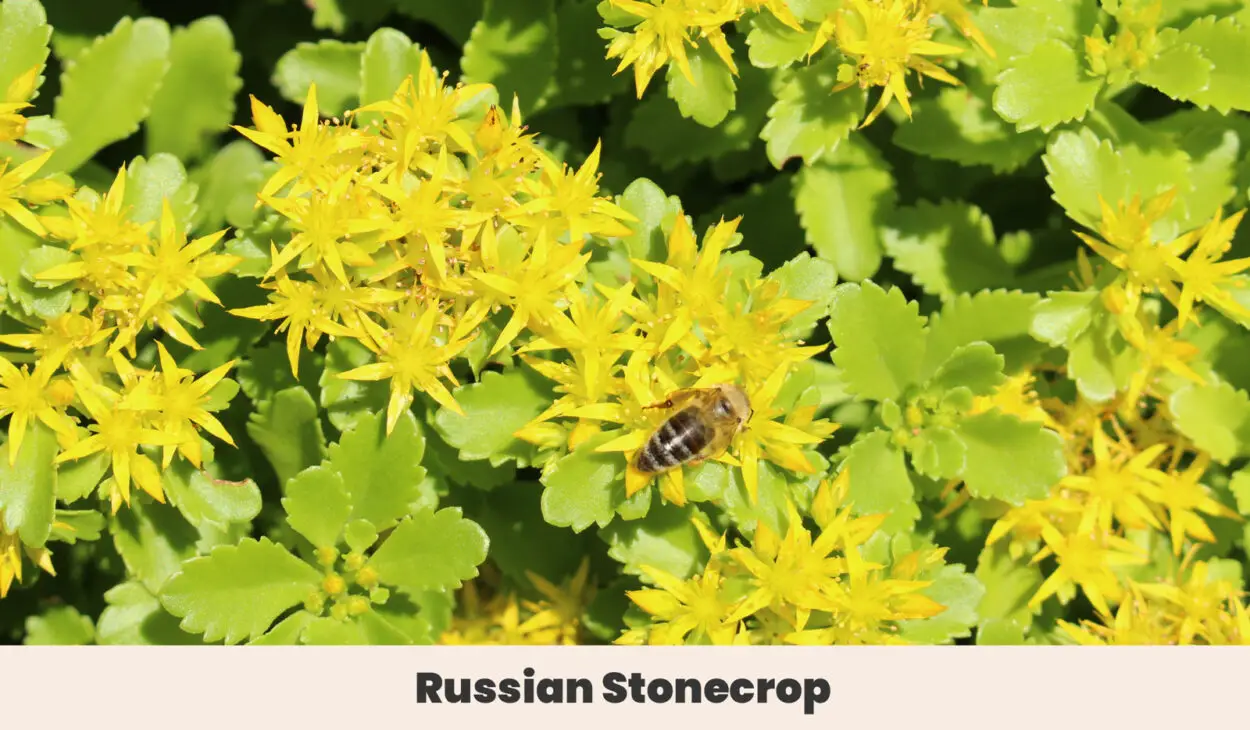
This drought-tolerant and low-maintenance ground cover produces clusters of bright yellow flowers in summer, followed by red seed heads in the fall. The tiny, fleshy leaves turn red in the fall, creating a striking display.
Russian Stonecrop is perfect for rock gardens, stepping stones, or ground cover in full sun and well-drained soil.
| Botanical Name: | Sedum Kamtschaticum |
| Growth Rate: | Fast |
| Native Range: | Russia, China, Japan |
| Hardiness Zones: | 3-9 |
| Soil Needs: | Well-drained, sandy soil |
| Exposure: | Full sun to part shade |
| Blooming Period: | Late spring to early summer |
| Water Needs: | Drought tolerant once established, but benefits from occasional deep watering |
10. Snow-in-summer (Cerastiumtomentosum)
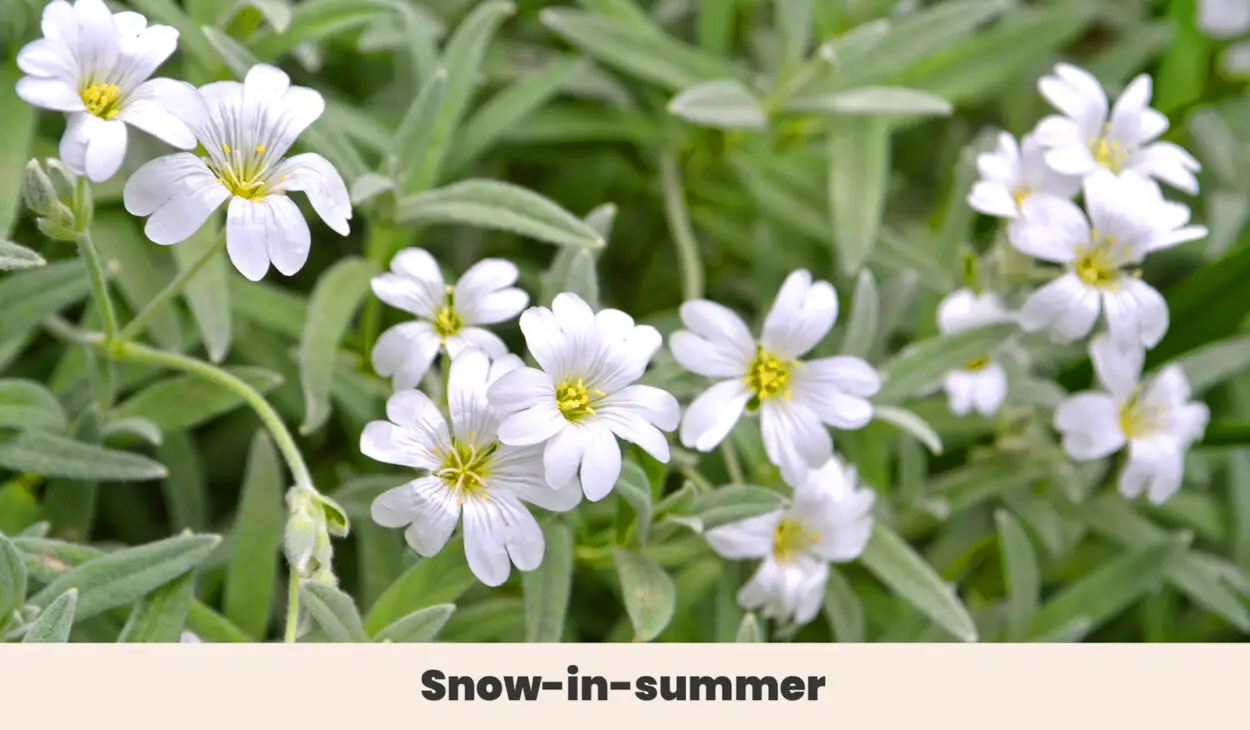
Snow-in-summer is a low-growing ground cover producing white, star-shaped flowers in spring and early summer.
The silvery-green foliage creates a soft and velvety carpet that spreads quickly, making it ideal for rock gardens, edging, or as a ground cover in sunny areas.
Snow-in-summer thrives in full sun and well-drained soil.
| Botanical Name: | Cerastium tomentosum |
| Growth Rate: | Moderate |
| Native Range: | Europe, Asia |
| Hardiness Zones: | 3-8 |
| Soil Needs: | Well-draining soil, slightly alkaline pH |
| Exposure: | Full sun |
| Blooming Period: | Late spring to early summer |
| Water Needs: | Drought-tolerant once established but can benefit from occasional watering during dry spells |
11. Creeping Jenny (Lysimachia Nummularia)
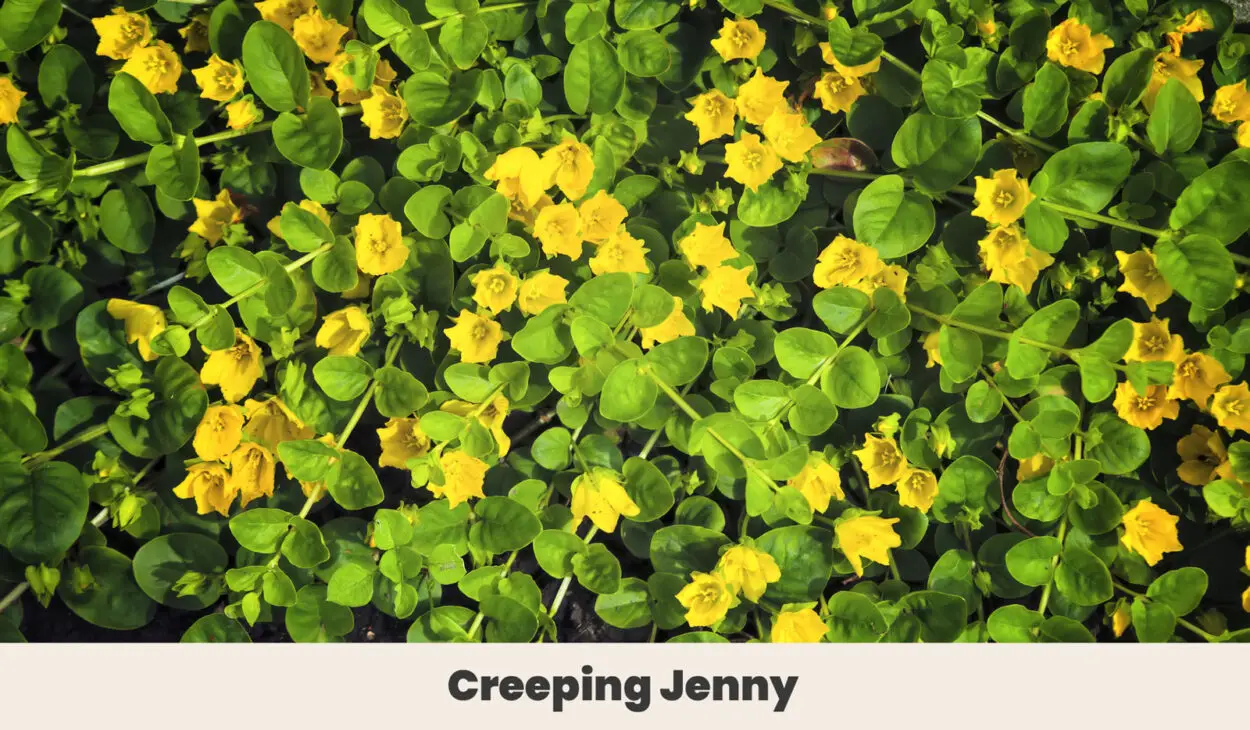
This low-growing ground cover produces bright yellow, cup-shaped flowers that bloom from late spring to early summer.
The bright green foliage forms a dense mat that spreads quickly, making it perfect for rock gardens, edging, or as a ground cover in moist, well-drained soil.
Creeping Jenny prefers partial shade but can grow in full sun with regular watering.
| Botanical Name: | Lysimachia Nummularia |
| Growth Rate: | Fast |
| Native Range: | Europe, Asia |
| Hardiness Zones: | 3-9 |
| Soil Needs: | Moist, well-drained soil |
| Exposure: | Full sun to part shade |
| Blooming Period: | Late spring to early summer |
| Water Needs: | Consistent moisture, but can tolerate some drought once established |
Final Thoughts
Hopefully, you have found this list of full-sun flowering ground covers helpful.
They’re all a gardener’s delight with creeping and crawling tendencies that can create a carpet of color and texture that can withstand the toughest conditions.
So, embrace the magic of these ground covers, and watch them transform your garden into a haven of beauty.
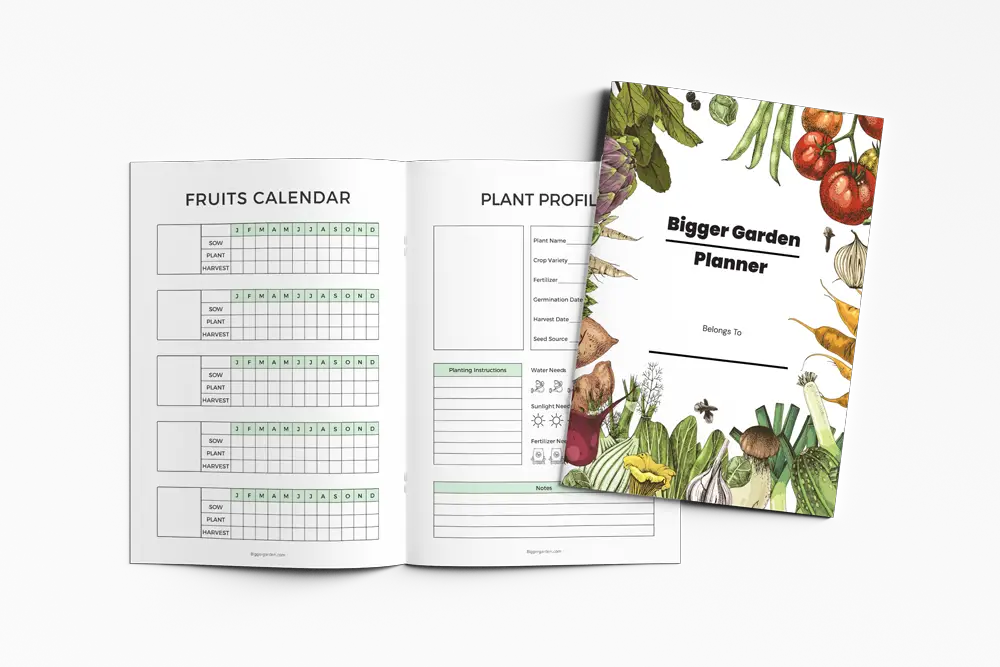

Before you go!
10 Outrageous Orange Perennial Flowers To Grow In Your Garden
8 World Famous Wildflower Gardens You Must See in 2024
11 Stunning Red Perennial Flowers That Bloom All Summer + Growing Guides
Could You Be Planting Bulbs Better? Discover the Secrets to Perfect Blooms for Spring & Summer